#paguroidea
Text

Strange Symmetries #13: The Hermit Crab Cycle
Hermit crabs are crustaceans that first appeared at the start of the Jurassic, about 201 million years ago. Despite their common name they aren't actually true crabs, instead being a classic example of convergently evolving a crab-like body plan via carcinization.
They also have noticeably asymmetric bodies, with abdomens that coil to one side and differently-sized front claws.

Pagurus bernhardus by Arnstein Rønning | CC BY 3.0
And while modern hermit crabs are famous for inhabiting scavenged snail shells, their fossil record suggests this wasn't always the case.
Originally, they seem to have lived in ammonite shells.
Palaeopagurus vandenengeli lived in what is now northern England during the Early Cretaceous, about 130 million years ago. Around 4-5cm long (~1.6-2"), it was found preserved inside the shell of the ammonite species Simbirskites gottschei.
Its left claw was much larger than its right, and together they would have been used to block the shell opening when it was hiding away inside. And while the exact shape of its abdomen isn't known, it probably asymmetrically coiled to the side to accomodate the spiralling shape of the host shell.
Hermit crabs seem to have switched over to using gastropod shells by the Late Cretaceous, around 90-80 million years ago, possibly due to marine snails developing much stronger sturdier shells during this period in response to the increasing prevalence of specialized shell-crushing predators. The more upright snail shells would also have been much easier to drag around the seafloor than ammonite shells – and meant that they were ultimately less affected by the total disappearance of ammonites during end-Cretaceous mass extinction.
———
NixIllustration.com | Tumblr | Twitter | Patreon
#science illustration#strange symmetries#paleontology#paleoart#palaeoblr#palaeopagurus#paguridae#paguroidea#hermit crab#anomura#decapod#crustacea#arthropod#invertebrate#art#carcinization
981 notes
·
View notes
Text


Photos 1-2 - Specimen 1


Photos 3-4 - Specimen 2


Photos 5-6 - Specimen 3
D. senex hermit crabs residing in empty Moon Snail shells.
13/08/23 - Diogenes senex
QLD:WET - Flying Fish Point, low tide sandy bay
#invertblr#invertebrates#Arthropods#Arthropoda#Diogenes senex#Paguroidea#Hermit Crabs#Decapoda#Decapods#Crustacea#Crustaceans#hermit crabs#crabs
57 notes
·
View notes
Text

Palaeopagurus
Palaeopagurus — вимерлий рід крабів-відлюдників з нижньої крейди.
Повний текст на сайті "Вимерлий світ":
https://extinctworld.in.ua/palaeopagurus/
#palaeopagurus#crab#hermit crab#cretaceous#cretaceous period#art#arthropoda#paguroidea#california#england#paleontology#paleoart#prehistoric#animals#illustration#extinct#article#digital art#animal art#fossils#палеоарт#палеонтологія#ukraine#ukrainian#україна#мова#ua#українська мова#арт#український тамблер
36 notes
·
View notes
Photo
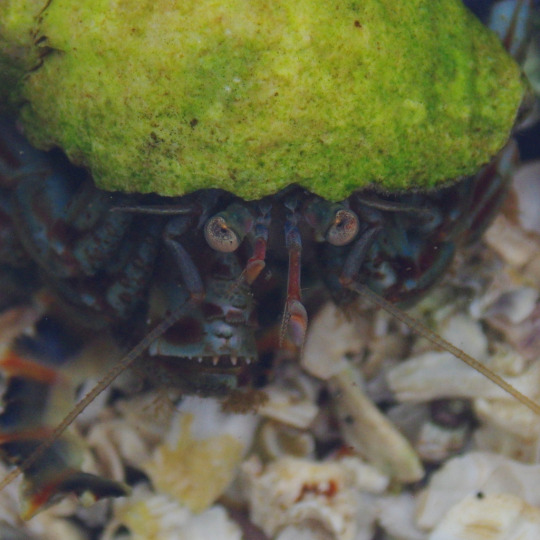
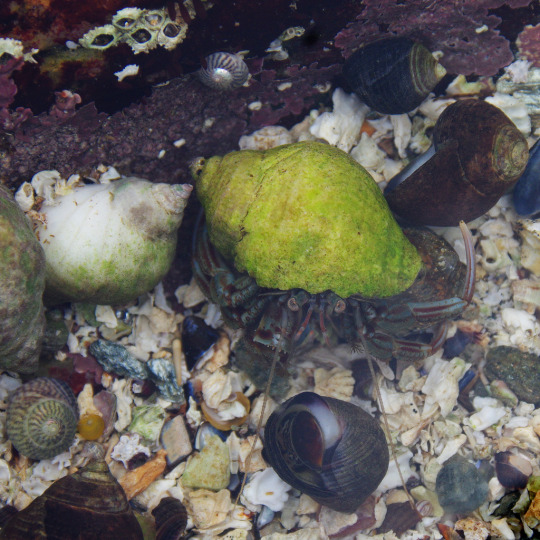
Hermit crab is unimpressed with my rockpooling adventures.
85 notes
·
View notes
Text



#tide pools#black tegula#tegula funebralis#sea snails#gastropods#hermit crab#paguroidea#crustacean#seashells#mollusks#la jolla
3 notes
·
View notes
Text
Chanell sucks a sloppy dick and sucks the cum out
El fetiche por las tangas / santosvargas
Chica desnuda bailando Tetona
Cherie Deville gasps and moans as she cums from Gias playful tongue to know her reaction well
Latin babe porn casting
Marie Bossette Plays With Dildo While Getting More Ink
Black Brazilian
Sexy Teen Pornstar Riley Reid Sucking Cock
Man provides hard doggy style sex to astonishing amateur babe
Hardcore piss Cory Chase in Revenge On Your Father
#BSCh#overpress#somatotypology#Kronfeld#half-lives#cerumens#clamourer#phonetize#overspeculate#corycavidin#Cyclosporeae#emirates#whippoorwills#truth-bearing#Paguroidea#epiphonema#regitive#armament's#Hydrophyllum#discriminably
0 notes
Photo

The following is an excerpt from pg 147-148 of the Annual report by the World Register of Marine Cryptids (WRCM):
The Mer-Mackerel Scomber mammatus (Haniver 1862)
By the standards of other cryptids, this a relatively common species. Few have been officially reported since Haniver’s description. But one only has to chart reports of complaints levied against tinned-mackerel companies to know they still swim in our waters.
According to legend, these mermaids can only be caught by baiting the hook with pieces of fine red cloth. Why they should be attracted to such finery is unknown. Their small size means that they do not pose a real threat to humans (except, perhaps, via indigestion).
Holotype locality: Unknown
Diet: Copepods and small fish. If sailor’s gossip is to be believed, they are also partial to cigarettes.
Habitat: Cold Atlantic waters
Mental capacity: Haniver’s report indicated that they can communicate via limited sign language. However, they have a rather nervous disposition and their rapid movements can make their signs difficult to decipher.
To read more of Haniver’s first hand accounts, see J. Haniver (1872) Report on anamolous paguroidea. Proceedings of the Royal Cryptozoological Society, Vol 21, 32-50.
#mermay#mermay 2023#my art#art#mackerel#1/4 mermaid#back at it again making more fake documents#and this is the first time I actually managed to do something for mermay#I hope yall like my silly tiddy fish
1 note
·
View note
Text
MerMay 2022 Day 6
Where does it say mermaids can't be crustaceans??? Or more specifically, "anomuran decapod crustaceans of the superfamily Paguroidea"? Hermit crabs are cool, I used to love holding them in my hands (even after getting pinched once 🥲). I had a lot of fun with this one, it was a fun concept for me. 😄

#my doodles#my art#drawing#mermay 2022#mermay#traditional art#colored pencil#hermit crab#the claaaawwwww
12 notes
·
View notes
Photo
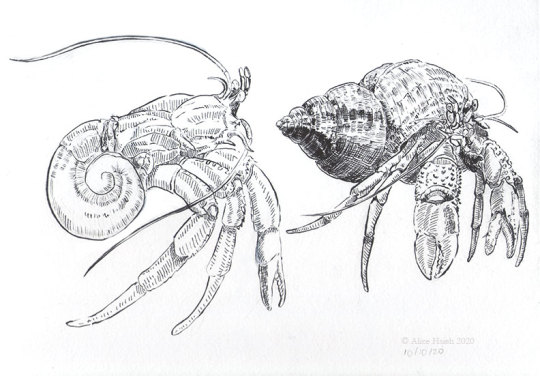
Sciartober Day 10: For the prompt: shelter, a hermit crab inside a whelk’s shell and outside of one, showing off their soft vulnerable abdomen. I think I’m going to keep the “naked” version a bit less rendered than the shelled version. Daiso brushpen, Sharpie Fine Line Marker, and Prismacolor Fine Line Marker (01 & 03) on Canson Watercolor paper.
#Sciartober#Sciartober2020#SciartoberDay10#shelter#hermit crab#animals#Decapoda#Arthropods#crab#snail shell#Paguroidea#art#my art#October Drawings#GNSI#ink#black and white#science illustration
23 notes
·
View notes
Photo

kuhnmi/Flickr (CC BY 2.0)
2 notes
·
View notes
Photo
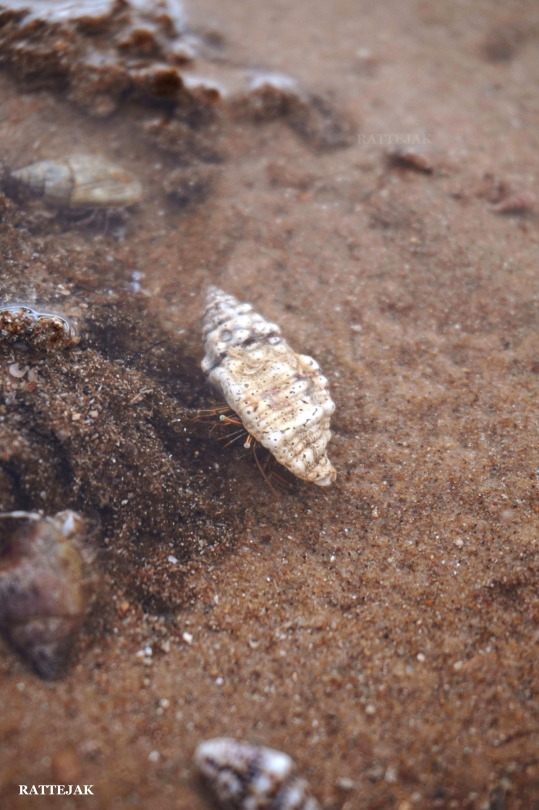

Lovely pink day at the beach ♥
Paguroidea species
22/08/21
#Paguroidea#Anomura#Pleocyemata#Decapoda#Eucarida#Eumalacostraca#Malacostraca#Multicrustacea#Crustacea#crustaceans#crabs#hermit crabs#beach#beach aesthetic#aesthetics#Aesthetic#ocean#sea#sea aesthetic#ocean aesthetic#photography#amateur photography#tidepooling#arthropoda#arthropods
11 notes
·
View notes
Photo

Hermit crabs at Baker Island (via USFWS - Pacific Region)
Photo by USFWS / Dana Schot
Baker Island National Wildlife Refuge, part of the Pacific Remote Islands Marine National Monument, is a tiny ancient atoll that supports a diverse community of marine organisms including seabirds, marine mammals, turtles, fish, plants, corals, and other invertebrates.
Nesting and foraging seabirds dominate the landscape and seascape while sheer isolation and solitude help us see our place in the natural world.
The Pacific Remote Islands National Marine Monument is one of the largest marine conservation areas in the world and protects over 400,000 square miles and seven national wildlife refuges on coral islands, reefs, and atolls.
#Strawberry Hermit Crab#Coenobita perlatus#Coenobita#Coenobitidae#Paguroidea#Anomura#Decapoda#Malacostraca#Crustacea#crustacean#hermit crab#wildlife refuge#Baker Island National Wildlife Refuge#Baker Island NWR#Pacific Remote Islands Marine National Monument
37 notes
·
View notes
Photo
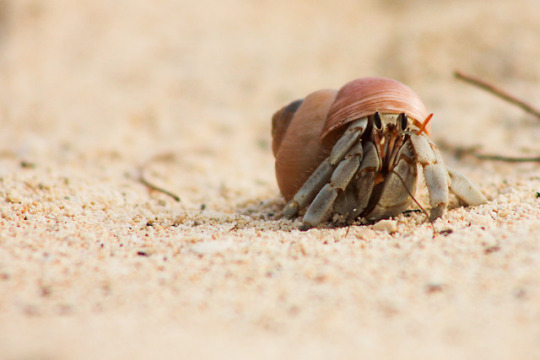
Hermit Crab
Paguroidea
Source: Here
#Crab#crabs#crustacean#crustaceans#animal#animals#wildlife#nature#cute#adorable#pet#pets#hermit crab#Paguroidea
187 notes
·
View notes
Text

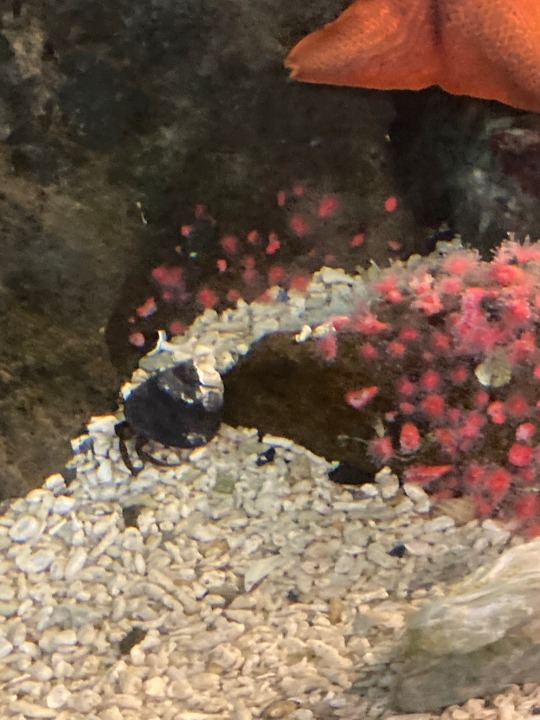
#bat star#sea star#starfish#patiria miniata#hermit crab#paguroidea#aquarium#bay area discovery museum#fort baker#sausalito
1 note
·
View note
Photo
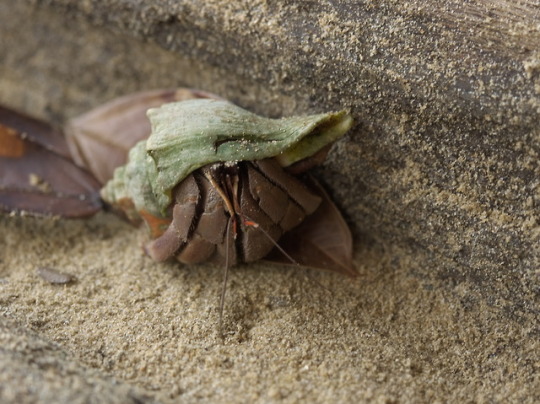
Hermit crab (Paguroidea) at Bako national park.
3 notes
·
View notes
Video
Hermit crab. #hermitcrabs are decapod crustaceans of the superfamily #paguroidea . Most of the approximately 1100 species possess an asymmetrical abdomen that is concealed in a scavenged mollusc shell carried around by the hermit crab. (at Baguran)
1 note
·
View note